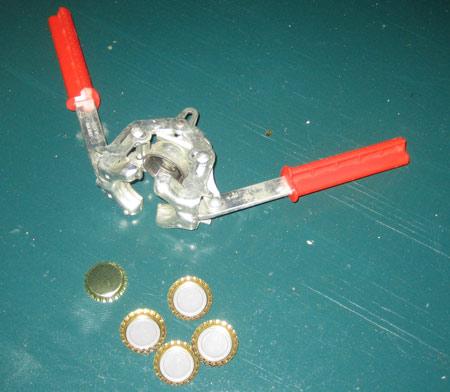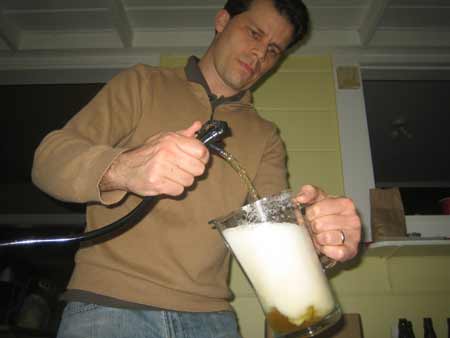


|
|

|

An empty keg is often the best indicator sign of a terrific party. |

As luck would have it, Sue had just given me some beer-making supplies, including empty 22 oz. beer bottles, bottlecaps and a
bottlecapper. Could I re-package the beer, allowing it to live for another Saturday? |
 The first bottle had a huge amount of foam.
There was hope that subsequent bottles would have less, but the problem didn't clear up
through three more bottles. This was probably a temperature-related
phenomenon. The first bottle had a huge amount of foam.
There was hope that subsequent bottles would have less, but the problem didn't clear up
through three more bottles. This was probably a temperature-related
phenomenon. The foam would eventually die down, but it took forever.
|

In an effort to diffuse the foam before the beer went into the bottles, I tried decanting the beer into a pitcher first. If I had been trying to obtain as much beer foam as possible. This would have been considered a total success.
|
Please continue reading page 2 of the Study for the Viability of Bottling Keg Leftovers
page 1 | 2 | 3
contact Rob | how much is inside a
keg | height weight chart |
how much is inside goldschlager |
backwash | breathalyzer
testing
science club | pranks |
How much is inside? |
Home |
Incredible Stuff I Made | Breath
Testing from the National Library of Medicine Web site
May 11, 2007.